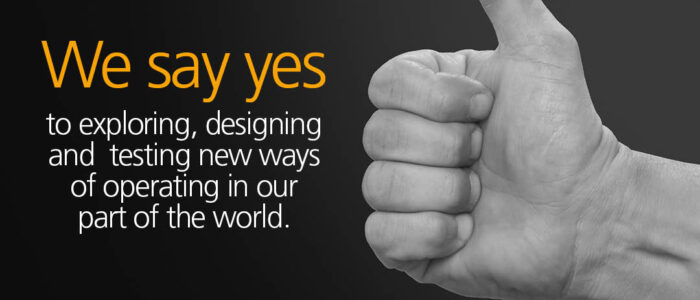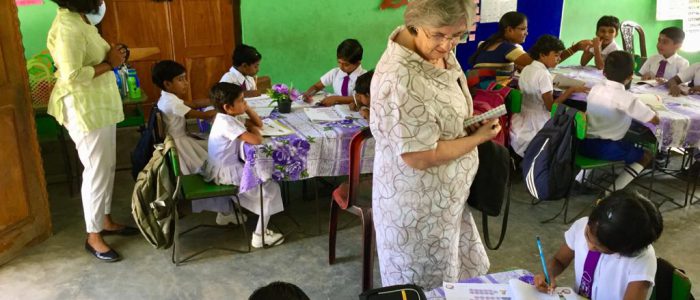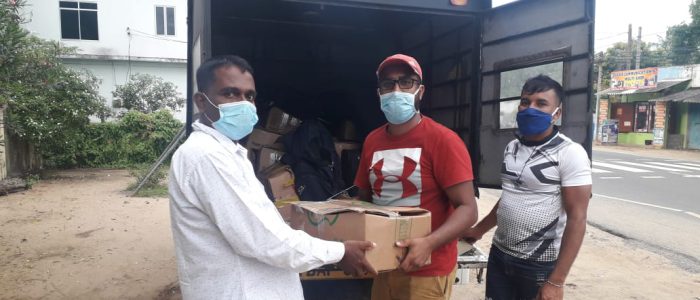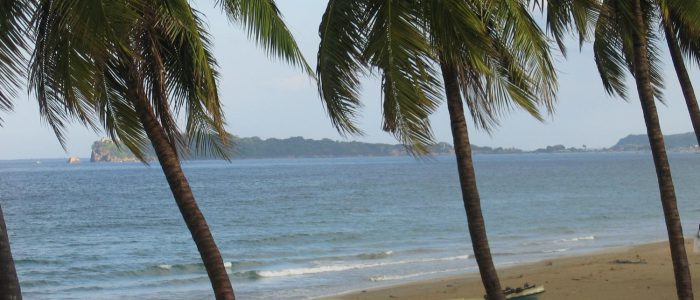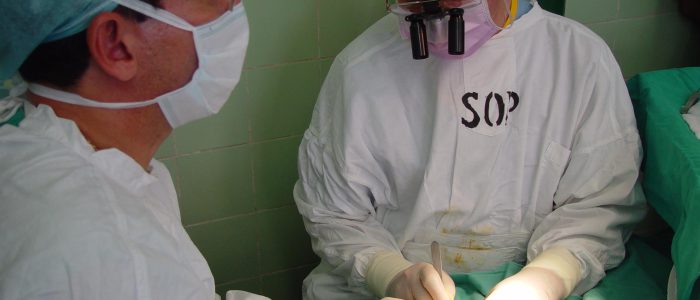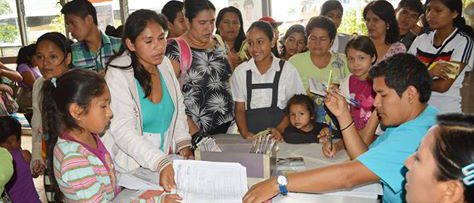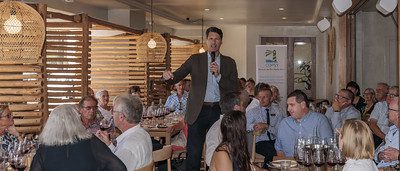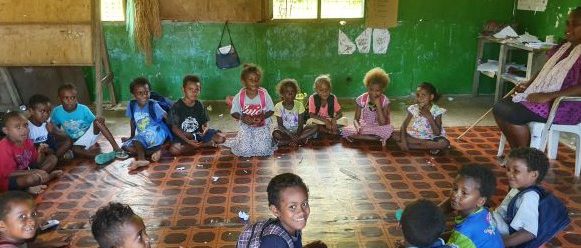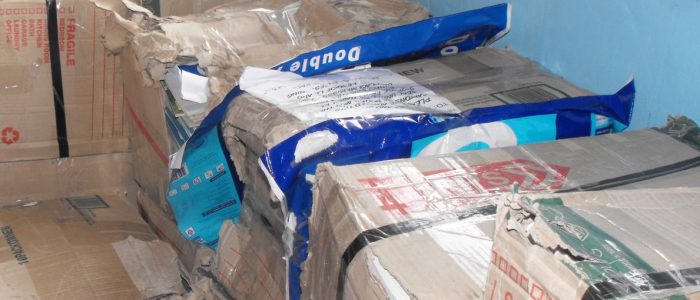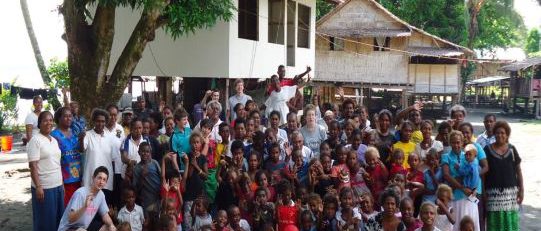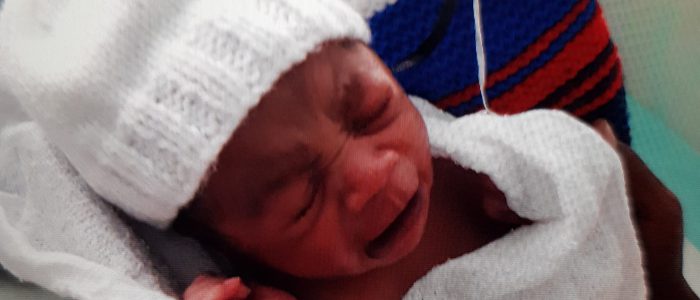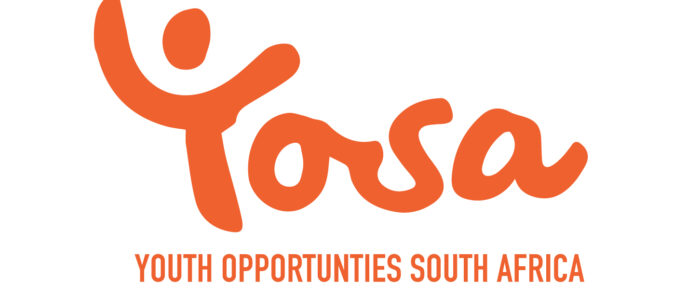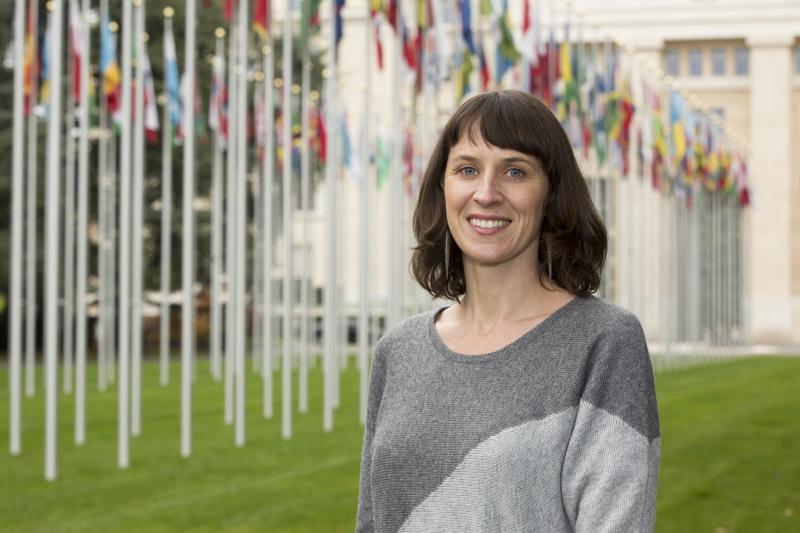Merry Christmas to All
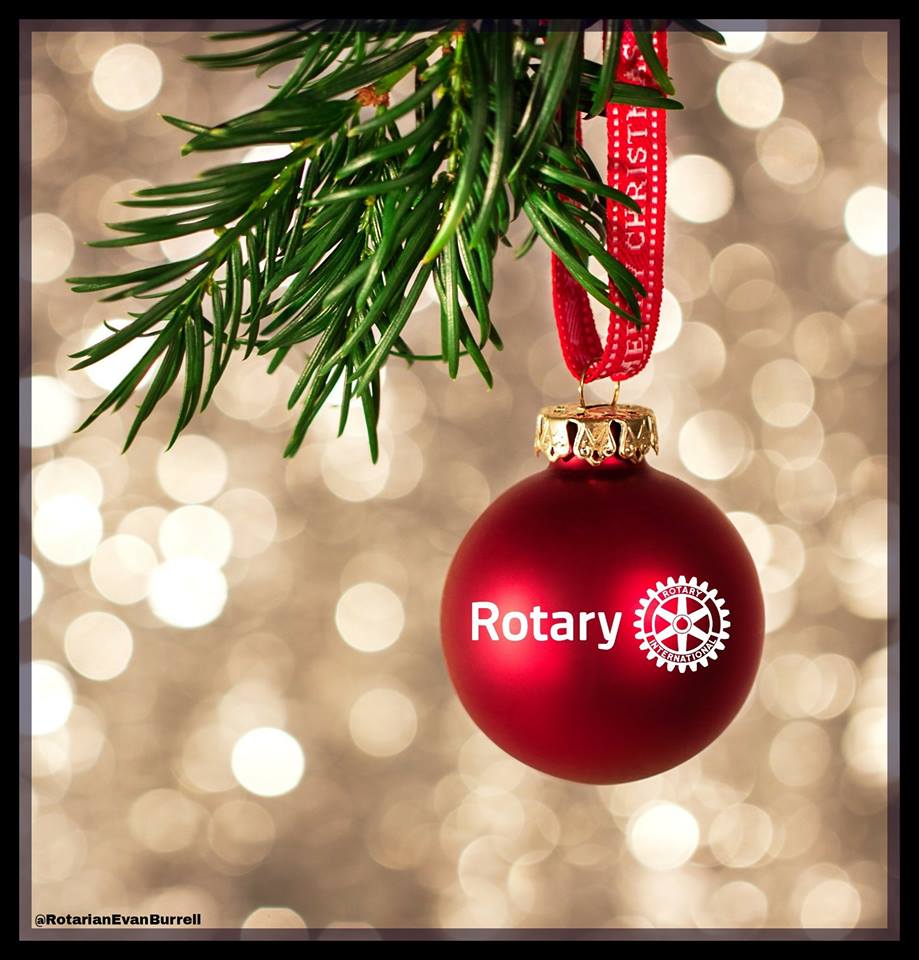 .
.
I would like to wish all members a safe and merry Christmas. Enjoy your family and your holiday break.
Carolyn and I will be overseas from Wednesday 10th January until Sunday 11th March 2018. I will try to attend meetings during our time away but with time differences and unknown Wifi connectivity our President Elect Marilyn with the assistance of Secretary Debbie Schache, will be conducting the meetings twice per month.
Little Paths Australia – Mwanza, Tanzania
RAWCS Project 68 of 2009-10
Please consider donating to Little Paths, Mwanza, Tanzania, one of our Club projects below:

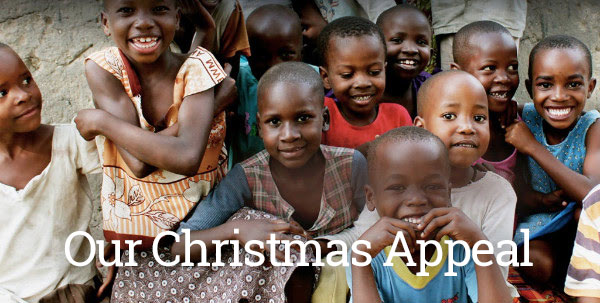
This Christmas period, we are aiming to raise $10,000 to help us to keep kids in school, off the streets and safely cared for by their families, in Tanzania. We simply insist and we hope you will too – that no child should ever leave their family looking for the opportunity to survive extreme poverty, this Christmas or any other.
Help us fight poverty by contributing a gift towards educational scholarships and family supports.
Raising $10,000 this Christmas period, will help us to continue our fight for safety, family and educated futures, to improve vulnerable lives.
Hi All,
Our next meeting will be a social meeting on Wednesday 20th December at 7.30pm Eastern Daylight Saving Time. Also we will induct a new member – Monica Vaughan and announce another award.
If you are not a member and wish to attend please notify – johnroberson@bigpond.com
I found the article below on how to use social media more effectively. Applying some of these principles could assist our Club as we utilize this medium more to get our message out to the public.
It provides some useful information to help you to create and publish your social media to better effect.

Hi All,
Thanks to all who attended last week’s meeting. It was well attended and it was great to have Rotarian Steve Marlor from the Rotary Club of Drummoyne in Sydney, NSW join us for the meeting.
Our next meeting will be a social meeting on Wednesday 20th December at 7.00pm Eastern Daylight Saving Time. Also we will induct a new member – Monica Vaughan.
If you are not a member and wish to attend please notify – johnroberson@bigpond.com
You may not be aware but I am a member of the Rotarian Action Group Against Slavery (RAGAS). All Rotarians are welcome to join. This is topical because the Australian Government is soon to introduce new legislation to target modern slavery in Australia. The article below explains some of our goals.
Education breaks the cycle of modern slavery
The Rotarian Action Group Against Slavery (RAGAS) has a strategy for fighting this horrible problem, working at the local level.
“It’s this Rotarian attitude – you give them a problem and instead of throwing their hands up in dismay, they start chipping away at it piece by piece,” says Carol Hart Metzker, a member of the action group. “Maybe slavery won’t be solved in my lifetime, but in two more years, we’re going to have a whole hamlet free.”
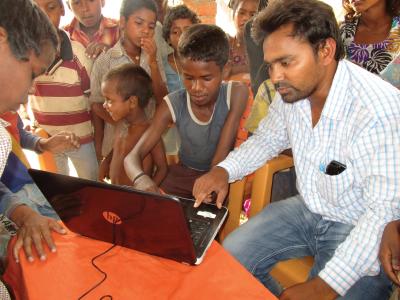
Voices4Freedom/Schools4Freedom
In a village in northeastern India, the action group is tackling the problem of debt bondage. With the help of 13 clubs, a district grant through the Rotary Club of Binghamton, New York, USA, and other sources, the action group is providing $36,000 toward the work of Schools4Freedom, a project of the organization Voices4Freedom. Schools4Freedom works with local partner organization Manav Sansadhan Evam Mahila Vikas Sansthan (MSEMVS) to battle debt bondage.
The RAGAS project will support the efforts in one of those villages for three years. The name of the village, which is in the Uttar Pradesh state, is kept secret to protect the villagers and aid workers.
Poverty, illiteracy, innumeracy, and natural disasters that destroy crops or homes can leave villagers vulnerable to debt bondage in rural villages.
“When people don’t have enough to eat, and they barely have the ability to keep a roof over their head and their family quite literally alive, they will often turn to whatever means are possible for survival,” Metzker says.
Families may seek an arrangement with a business owner, who asks them to sign a contract that they can’t read and therefore can’t understand, and they inadvertently trade their freedom for survival, she says.
“The slaveholder creates a scheme such that the interest is more than the family ever makes, so no money really changes hands, and the family gets further and further into debt,” Metzker says. “That contract is never paid off.”
The slaveholder creates a scheme such that the interest is more than the family ever makes, so no money really changes hands, and the family gets further and further into debt. That contract is never paid off.
Carol Hart Metzker
Rotarian Action Group Against Slavery
Of the village’s 400 residents, 132 are living in debt bondage, enslaved in the slaveholder’s brick kilns, farm, or construction projects, she says. “The others are at risk because they, too, are in abject poverty.”
Hundreds of thousands of people in Uttar Pradesh and the neighboring state of Bihar are working in forced labor in industries including agriculture, domestic servitude, commercial sex, stone quarries, or brick kilns, says Bhanuja Sharan Lal, director of MSEMVS.
The problem is exacerbated by inaction on anti-slavery laws, caste discrimination, discrimination and violence against women, lack of effective protection for children, lack of training of front-line officials, and corruption, Lal says.
“Businesses and landlords, mostly in the informal sector, face no effective sanctions for holding and using people in forced labor,” he says. “The status quo survives because in many industries the business model relies on debt bondage as a means to control workers.”
The Schools4Freedom project establishes a school, including funding for two teachers. Children receive school supplies and three years of hot lunches. The village gets a computer to document the project. A solar light is installed in the village to help protect children from snakebites and help prevent sexual assault against women. Women are trained in a trade.
“What’s so amazing about Schools4Freedom is that one removes all of these vulnerabilities,” Metzker says. “You strengthen the people and then you teach them that they have basic rights so that they can go and, in a sense, demand that freedom themselves.”
Funds also pay for a simple school structure of brick pillars with a corrugated tin roof. It keeps the extreme heat and rain at bay, “but it’s not such an amazing building that someone can take it over,” she says. “It’s not so valuable that a slaveholder would burn it down to stop the process.”
Most important, the project pays for two front-line workers who are local and highly specialized in educating the villagers. The workers teach them that they have basic human rights such as freedom and access to government services – and all of this is done quietly at first, Metzker says.
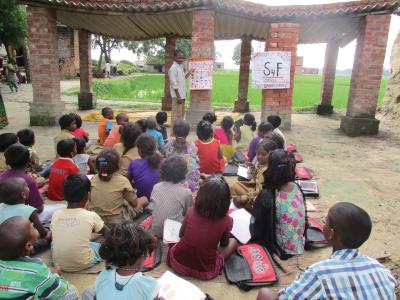
“You have to know how to do it, when to do it, the safe way to do it so that the front-line workers themselves and the villagers don’t take the brunt of a slaveholder’s anger,” she says. “We can’t, as Rotarians, do that job.”
The school structure is usually the first sign to the slaveholders that something may be happening, and they may ridicule the children for getting an education, trying to convince them that it’s pointless.
“Does the slaveholder think about where that’s going in two or three years? The writing is on the wall,” Metzker says.
Sometimes slaveholders, not wanting to lose the labor, will create employment arrangements with the villagers. Other times, slaveholders become violent and the situation requires legal action, she says.
The three-year process ensures time for the entire village to see that it is in a position of strength.
Additionally, liberated villages are connected to a network of other freed villages, to continue supporting one another, says Peggy Callahan, co-founder of Voices4Freedom.
The problem of debt bondage is insidious because it can entrap multiple generations. But with the project efforts, “not only will these people be free and educated and able to build a life of dignity, but their children and grandchildren and great-grandchildren will be born in freedom,” Callahan says.
Metzker, who is a member of the Rotary E-Club of One World D5240, became involved in anti-slavery efforts after a National Immunization Day trip to India in 2004, during which she visited a center for children who had been freed from slavery. She went on to write the book Facing the Monster: How One Person Can Fight Child Slavery and now works as a consultant to the Salvation Army’s New Day to Stop Trafficking program. She received Rotary’s Service Above Self Award in 2009-10.
“Someday, there is going to be such a huge difference because we realized there really is something you can do,” she says. “And we did it.”
This is another Rotary Action Group that does great work.
Cleaning up the rivers of the world
By the Water & Sanitation Rotarian Action Group (WASRAG)
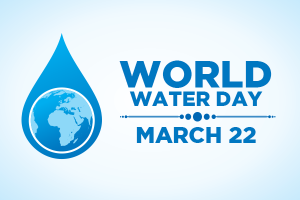 Today, 1.8 billion people use a source of drinking water contaminated with feces, putting them at risk of contracting cholera, dysentery, typhoid and polio. In 1993, the United Nations General Assembly officially designated 22 March as World Water Day. This annual day is coordinated by UN-Water in collaboration with governments and partners to tackle the water crisis.
Today, 1.8 billion people use a source of drinking water contaminated with feces, putting them at risk of contracting cholera, dysentery, typhoid and polio. In 1993, the United Nations General Assembly officially designated 22 March as World Water Day. This annual day is coordinated by UN-Water in collaboration with governments and partners to tackle the water crisis.
The United Nations Sustainable Development Goals, launched in 2015, include a target to ensure everyone has access to safe water by 2030, making water a key issue in the fight to eradicate extreme poverty.
In celebration of World Water Day 2018, the Water & Sanitation Rotarian Action Group (WASRAG) is encouraging Rotary clubs throughout the world to consider adopting a river clean-up or similar project in or near their community. Since the time of year to best implement these types of projects varies from region to region, your project can take place at any time leading up to World Water Day, but we will celebrate and promote your projects as part of World Water Day activities.
Don’t know where to start? Contact your local conservation authority (if there is one) and they can point you to areas in your community where the need is most critical and alert you to environmentally sensitive issues. Here are a few types of hands on projects your club can take on:
- Cleaning up debris along a river or stream, and recycling qualified items
- Planting trees and native plants along the water
- Promoting safe and organic alternatives for lawn and garden fertilizers
- Creating awareness about invasive water species
- Partnering with local conservation and water protection NGOs on projects
- Encouraging slow speeds of boats and other water toys
- Planting a rain garden
- Creating awareness about not dumping into storm drains
- Promoting use of non-toxic tackle for fishing
We also encourage you to educate your community on river clean-up projects and promote the benefits through programs such as:
- Hosting an essay contests on why rivers need to be kept clean
- Educating others on social and digital media
- Organizing club programs about the benefits of clean water
- Hosting friendly club project competitions
- Participating in community events to promote Rotary’s involvement in World Water Day: Chamber of Commerce activities, local conservation events, etc.
Enter in our competition for a chance to win!
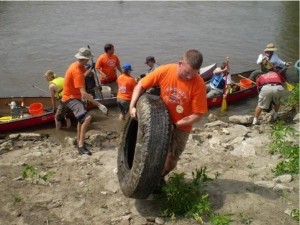 Submit a brief description of your project, including what you’ve done, the target audience and the expected impact. Remember to tell us your district number and club name as well as your name, email address and phone number. Please send all entries to info@wasrag.org.
Submit a brief description of your project, including what you’ve done, the target audience and the expected impact. Remember to tell us your district number and club name as well as your name, email address and phone number. Please send all entries to info@wasrag.org.
- DEADLINE: May 1st, 2018
- AWARDS: Two outstanding projects (the most impactful and the most innovative) will be selected for a USD $500 award. Winners will be notified by May 31st, 2018. The awards will be presented at WASRAG’s Annual General Meeting on Saturday June 23rd, 2018 in Toronto, Canada.
We encourage you to promote your project during club meetings leading up to World Water Day and be sure to add them to Rotary Showcase. WASRAG will also promote select projects in our newsletter, website, and on social media. Take action and join our World Water Day Challenge!
HI ALL,
The next meeting of our E-Club will be held on ZOOM, next Wednesday 6th December at 7.00pm Eastern Daylight Time or 6.00pm Eastern Standard Time.
The following meeting will be a social meeting on Wednesday 20th December at 7.00pm Eastern Daylight Saving Time.
If you are not a member and wish to attend please notify – johnroberson@bigpond.com
During November a number of members have donated to The Rotary Foundation (TRF). Thank you to those members and I encourage all who haven’t given yet to consider doing so. Our Treasurer will forward the donations to TRF, early in the new year so you still have time to make your donations.
You will find details of how to make your donation below.
EFT Payments please make out to:
Account Name: The Rotary E-Club of District 9700 – Service/Projects,
Reference – Name plus ‘TRF’
BSB: 032769 Account: 697413
Cheque Payments by post make out to: Rotary E-Club of District 9700-Serving Humanity
Reference – ‘TRF and your name’, and mail to:
Treasurer,
Rotary E-Club of District 9700-Serving Humanity,
32 High St (PO Box 25), YACKANDANDAH, VIC 3749
The article below explains some of the areas that our Foundation supports with your donation.
GIVE THE GIFT OF ROTARY
For more than 100 years, The Rotary Foundation has been supporting Rotarians’ work to create sustainable solutions to our world’s most pressing needs. But there is still much to do, and we need your help.
Rotary gives in countless ways, focusing our service efforts in six areas: promoting peace, fighting disease, providing clean water, saving mothers and children, supporting education, and growing local economies. We’re also working hard to end polio once and for all.
Give the gift of Rotary today and be a part of the positive change Rotarians are making in your community and around the world. Every gift makes a difference.
What your gift supports

$10 mosquito bed net
Bed nets provide a safe, peaceful night’s rest in countries like Uganda, where malaria is a major health concern.

$15 polio vaccines
Polio is still a crippling threat to children in Afghanistan, Nigeria, and Pakistan. A gift of just $15 can protect children for life.

$50 water filter
In rural Guatemala, deadly waterborne diseases are common. Personal water filters fill the need for clean water.

$85 business classes
In the United States, business classes teach low-income entrepreneurs the skills they need to be successful.

$100 sewing machine
With a sewing machine, a microloan, and some training from Rotary, entrepreneurs can turn their sewing skills into a thriving business.

$200 medical equipment
Newborns start their lives healthy when hospitals have up-to-date equipment to care for babies in the first moments of their lives.

$500 anti-bullying campaign
No child should live in fear of being bullied. Your gift helps communities create a safe and positive atmosphere where children can thrive.

$1,000 conflict resolution training
When secondary school students learn to resolve conflict, they can build a more peaceful and secure future for themselves and their communities.

$2,650 irrigation system
In areas where food security is a concern, irrigation systems give farmers a reliable and efficient water source so they can grow crops and provide food for the community.
Your gift supports projects like those described here but may not purchase the specific items listed.
Promote the Give the Gift of Rotary campaign by linking to this page on your website and social media pages. You can also distribute our promotional flier at club meetings and community events.
Hi All,
If you are not a member and wish to attend please notify – johnroberson@bigpond.com
The article below is interesting and shows the work being done to protect indigenous rights round the world.
Protecting the rights of indigenous peoples

Athili Sapriina during the annual Rotary Peace Fellow seminar at the University of Queensland, Australia.
By Athili Sapriina, 2013-2014 Rotary Peace Fellow at the University of Queensland, Australia
I first became aware of Rotary Peace Fellowships during a trip to the Rotary Peace Center at Duke University and the University of North Carolina at Chapel Hill, US, in 2008. I had previously attended the United Nations Permanent Forum on Indigenous Issues in New York City and over the years witnessed an increased involvement of Rotary with indigenous peoples issues. I am honored to be the first Naga to be awarded a Rotary Peace Fellowship.
The three million Nagas are indigenous peoples of the mountainous frontier between India and Burma. Since the end of British colonialism, Nagas have fiercely defended their independence resulting in the death of thousands — Indians, Burmese and Nagas.
The peace fellowship gives me a chance to build on current peace initiatives to resolve one of the longest running disputes in the world. Nagas seek the reunification of their homeland, which is divided between India and Burma. Within India, Nagas are further segregated into four states reducing them to minorities in their own land.
In 1994, I participated in the first World’s Indigenous Peoples Day held at the YMCA in New Delhi, India. Since then, globally there has been major advancements through the establishment of the Permanent Forum on Indigenous Issues, an Expert Mechanism on the Rights of Indigenous Peoples, and the appointment of a Special Rapporteur on the rights of indigenous peoples.
Working toward peace necessitates continuous dialogue. I find it fascinating that indigenous leaders, support groups, and national governments continue to engage on these issues even where agreement is lacking on how the UN declarations apply. For example, some states do not acknowledge they have indigenous peoples within their territories, and therefore do not recognize a responsibility under the declaration. Achieving peace, understanding, and justice is a work in progress.
Still, in September, the first World Conference on Indigenous Peoples is expected to reiterate the important and continuing role of the UN in promoting and protecting the rights of indigenous peoples.
As a print journalist, I plan to use my skills to work for peace, justice, and greater tolerance, while branching out into radio and current media platforms. My peace fellowship has increased my capacity to contribute meaningfully to this important issue.
International Day of the World’s Indigenous Peoples is 9 August. Watch a live webcast of the commemoration at the UN on 8 August and learn more about how you can support the Rotary Peace Centers program.
MEETING THIS WEEK
Hi all,
We will hold a Social Meeting of our Club this next Wednesday, 22nd November at 7.00pm Eastern Summer Daylight Time (NSW) or 6.00pm Eastern Standard Time (QLD). We will discuss our KIVA loans and our badges, brochure, business cards and banner.
Be prepared to tell us about you last couple of weeks and anything that inspired you.
If any non-member wishes to attend please contact me with your email address so that you get a link to our ZOOM meeting. – johnroberson@bigpond.com
Below is more about the Peace day in Geneva on 11th November.
‘Peace needs to be lived’
Rotary Day at the United Nations pushes peace from concept to reality
On the 99th anniversary of the end of World War I, more than 1,200 people gathered in Geneva, Switzerland, for Rotary Day at the United Nations.
Representing 87 countries, they convened on Saturday, 11 November, at the Palais des Nations, originally the home of the League of Nations, and dedicated themselves to the theme introduced by Rotary President Ian H. S. Riseley: “Peace: Making a Difference.”
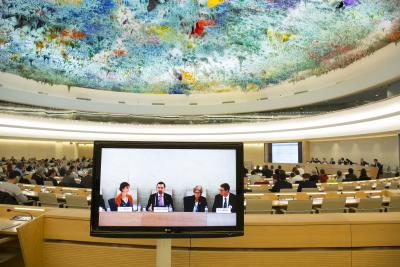 View Slideshow
View Slideshow “The advancement of international understanding, goodwill, and peace have always been among Rotary’s primary goals,” said Riseley. “It is past time for all of us to recognize the potential of all of our Rotary service to build peace, and approach that service with peacebuilding in mind.”
For the first time in its 13-year history, Rotary Day at the UN was held outside of New York.
Rotary Day concluded Geneva Peace Week, during which John Hewko, general secretary of Rotary International, noted the “close and longstanding ties between Rotary and the UN in (their) mutual pursuit of peace and international understanding.”
Rotary members “can transform a concept like peace to a reality through service,” said Ed Futa, dean of the Rotary Representatives to the United Nations. “Peace needs to be lived rather than preached.”
During a Rotary Day highlight, Hewko introduced Rotary’s 2017 People of Action: Champions of Peace. He praised them as “an embodiment of the range and impact of our organization’s work,” and saluted them for providing “a roadmap for what more peaceful, resilient societies look like.”
Rotary honored six individuals, who each made brief remarks. They were:
-
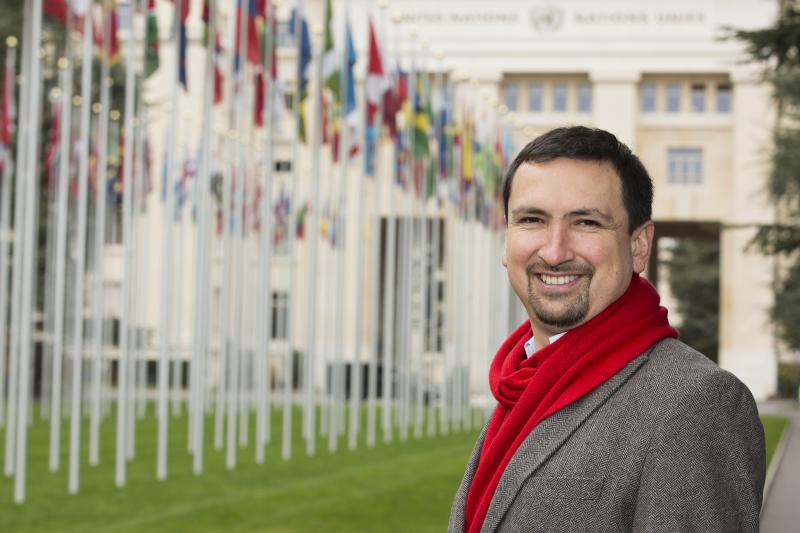
Alejandro Reyes Lozano, of the Rotary Club of Bogotá Capital, Cundinamarca, Colombia: As “part of the generation that grew up with uncertainty and fear,” as he put it, Reyes Lozano played a key role in negotiating an end to the 50-year conflict between the Colombian government and the Revolutionary Armed Forces of Colombia (FARC). Now he’s using a Rotary Foundation global grant to lead peacebuilding efforts among women from six Latin American countries. -
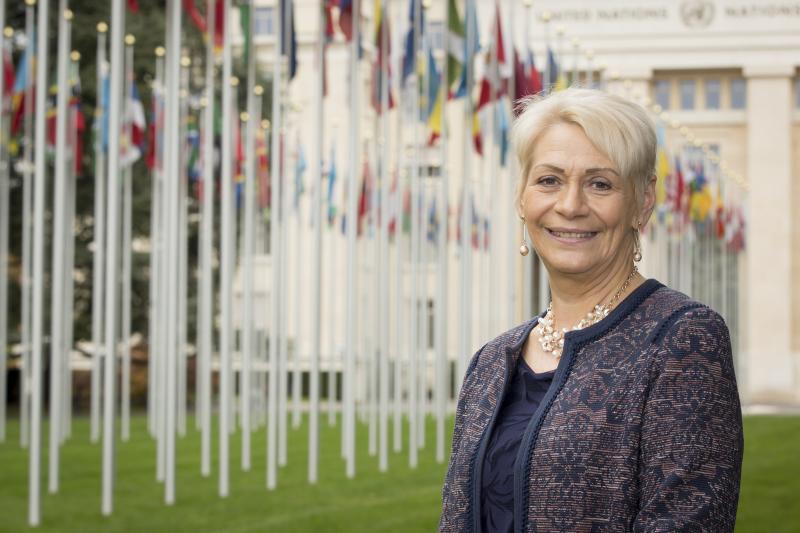
Jean Best, of the Rotary Club of Kirkcudbright, Dumfries and Galloway, Scotland: “Without peace within ourselves we will never advance global peace,” said Best, explaining The Peace Project, the program she created to help “the future leaders of peace” develop the skills they need to resolve the conflicts in their lives. -
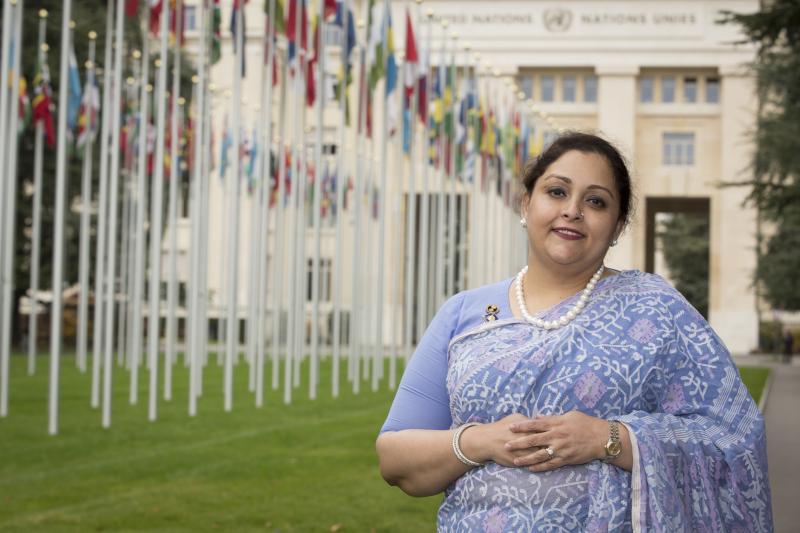
Safina Rahman, of the Rotary Club of Dhaka Mahanagar, Bangladesh: “Education is a powerful and transformative vehicle for peace,” said Rahman, a passionate advocate for workers’ rights and workplace safety who also promotes and provides educational and vocational opportunities for girls. 4. 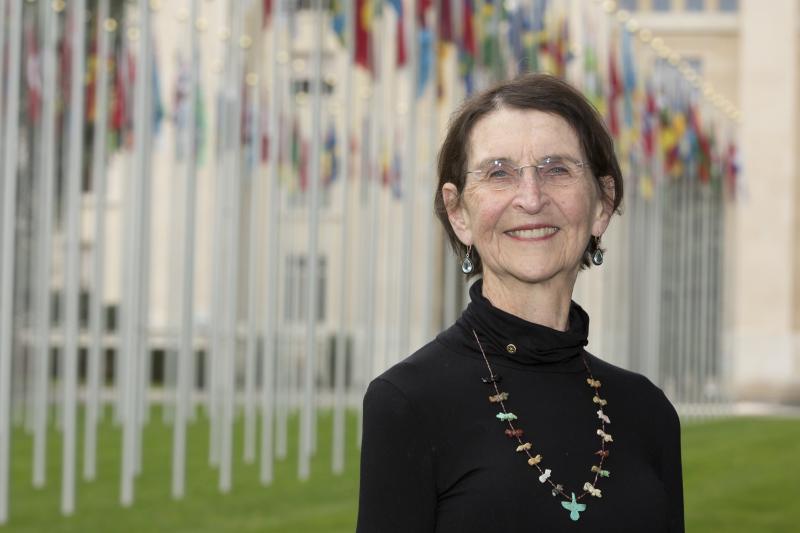
Ann Frisch, of the Rotary Club of White Bear Lake, Minnesota, USA: Frisch’s Civilian-Based Peace Process introduced the radical concept of “unarmed civilian protection” in war zones around the world. “Sustainable peace,” she said, “requires strong civilian engagement.”
5.
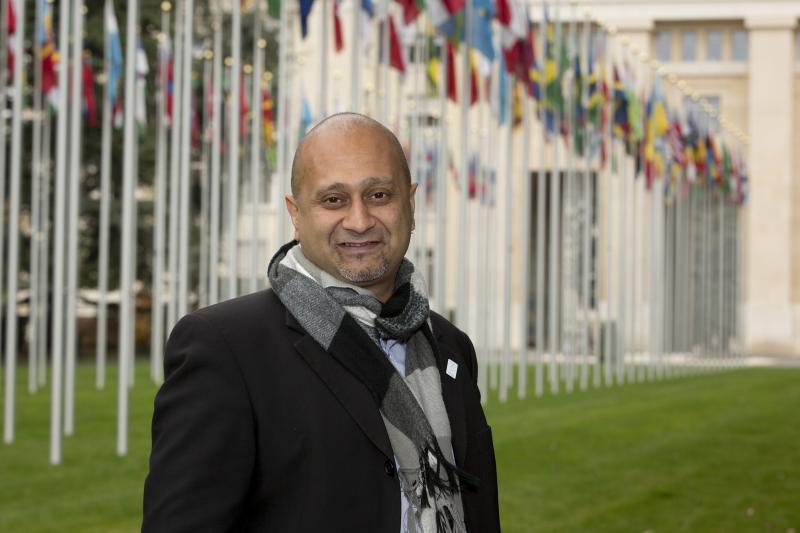
Dr. Michel Zaffran, the director of polio eradication at the World Health Organization, provided an update on efforts to eradicate polio. They noted the tremendous progress made by Rotary, WHO, the Bill & Melinda Gates Foundation, and other partners in eliminating 99 percent of all global incidences of polio.
Returning the focus to peace, Zaffran said: “This same international relationship (that’s eradicating polio),” he said, “can be used to achieve world peace.”
Zaffran was joined Her Excellency Mitsuko Shino, the deputy permanent representative of Japan to the international organizations in Geneva and co-chair of Global Polio Eradication Initiative’s Polio Partners Group.
In his keynote address, Riseley made a similar observation. “The work of polio eradication, has taught us . . . that when you have enough people working together, when you understand the problems and the processes, when you combine and leverage your resources, when you set a plan and set your targets — you can indeed move mountains,” he said. “And the need for action, and cooperation, is greater now than ever before.”
- Watch the opening session of Rotary UN Day including remarks by the 2017 People of Action: Champions of Peace.
DG George Weston Club Visit
What a great meeting last Wednesday with DG George and his wife Carol attending as well as PDG Gary Roberts and Assistant Governor Scott Kable. A total of 12 in attendance and only one member was an apology.

DG George spoke on his personal rewards from being a member of Rotary, the importance of the Club, its fellowship and having activities to involve members. Having the right mix for our members will help the club retain members and attract new members. He also spoke on the work of the Rotary Foundation and RAWCS. As well he spoke as the importance of connecting with the Youth in our communities and offering the activities and awards that will benefit them and our communities into the future.
The Board meeting held following the Governors presentation announced the success of our Membership Grant for $1,200 and the executive will be meeting this week to discuss the various ways we be using it to publicise our Club both in our communities and our Rotary District. Hopefully this will assist to increase our Club membership.
November is Rotary Foundation Month
I ask all members and other interested people in the community to consider their donation to the work of the Rotary Foundation by making their donation as below:
EFT Payments please make out to:
Account Name: The Rotary E-Club of District 9700 – Service/Projects,
Reference – Name plus ‘TRF’
BSB: 032769 Account: 697413
Cheque Payments by post make out to: Rotary E-Club of District 9700-Serving Humanity
Reference – ‘TRF and your name’, and mail to:
Treasurer,
Rotary E-Club of District 9700-Serving Humanity,
37 High St, YACKANDANDAH, VIC 3749
Just some of the work the Rotary Foundation Does
On the tracks of the Beast
In Mexico’s migrant shelters, a Rotary scholar puts his education into action
There are two inescapable elements of southern Mexico.
The first is dust – desert rock ground to a powder that finds its way into your every crevice: the backs of your knees, the folds of your eyelids. You cough it up as you drift to sleep and discover its brume settled across your bedsheets in the morning.
The second element is violence.
I found both on the gritty tracks of the Beast.
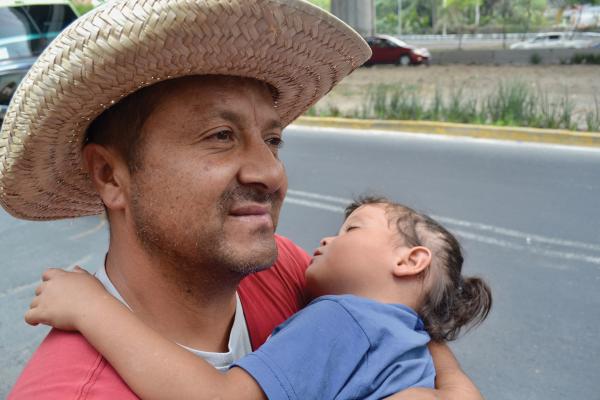
Over the past half-century, millions of Central Americans have crossed Mexico from south to north, fleeing poverty, decades-long civil wars, and, most recently, brutal gangs. To escape, migrants used to ride atop the cars of the train line known as the Beast.
In July 2014, Mexican immigration officials announced a plan called the Southern Border Program; part of it entailed closing the Beast to migrants. Mexican President Enrique Peña Nieto said the plan would create new economic zones and safeguard migrants’ human rights by securing the country’s historically volatile southern border. Instead, the number of migrants beaten, kidnapped, and murdered has skyrocketed. Some have even been victims of the black-market trade in organs.
In early 2015 I had just completed my studies as a Rotary global grant scholar, earning a master’s degree in the anthropology of development. I had studied how trade and development initiatives in Mexico could make people’s lives more perilous, not less. To learn about what was going wrong, I went to southern Mexico to use the skills I had gained through my global grant studies.
Southern Mexico is poor and rural, made up of small pueblos and subsistence agriculture. In some ways, I felt at home. I grew up in rural Georgia, and I became interested in immigration after teaching English to farmworkers harvesting cabbage, berries, and Christmas trees in the foothills of North Carolina. Many of the men I worked with were from southern Mexico. Their descriptions of the violence brought by drug and human trafficking led to my interest in the region.
To understand how the Southern Border Program was affecting people’s lives, I stayed in migrant shelters, which are not unlike homeless shelters or temporary refugee camps. They are often without reliable running water or electricity, but they do provide migrants with a warm meal and a place to rest before they continue north.
At first, shelter life was a shock to me. Sick or injured people arrived nearly each day. Severe dehydration was a big problem, and some people had literally walked the skin off the bottoms of their feet. I was there when a gang member entered the shelter to kidnap someone, but shelter directors stopped him.
By the time I arrived, shelters along the tracks of the Beast had seen the number of migrants dwindle from 400 a night to fewer than 100. Shelter directors explained that the number of Central Americans fleeing into Mexico each year – around 400,000 – had not fallen, but because immigration agents were now apprehending anyone near the Beast, people were afraid to approach the shelters. These safe havens had been transformed into no-go zones. “This is a humanitarian crisis on the scale of Syria,” one director said to me, “but no one is talking about it.”
In the shelters, I chopped firewood, cooked dinners, and scrubbed kitchen floors. I changed bandages and helped people file for asylum. And I lived and traveled with migrants headed north, recording their stories – about why they left, where they hoped to go, and what they had faced on their journeys.
Mildred, a single mother of three, was fleeing gang members who threatened to kill her family if she didn’t pay them a protection fee. Ivan, the oldest brother of six, singlehandedly resettled his entire family in Mexico – including his elderly mother and his two toddler nephews – after hit men tried to kill them in their home in Honduras. Milton had lived in New York City for years – and had sheltered ash-covered pedestrians in his apartment during the 11 September 2001 terror attacks – before being deported.
The things I learned were terrifying. Instead of shoring up Mexico’s borders, the plan had splintered traditional migrant routes. Those routes had been dangerous, but they were also ordered and visible. Migrants knew approximately which areas of the train passage were plagued by gangs. They were prepared to pay protection fees – generally between $5 and $20. They traveled in groups for safety. And they were often close to aid – a shelter, a Red Cross clinic, even a police station.
The Southern Border Program changed that. Hunted by immigration officers, migrants traveled deep into the jungle, walking for days. Gangs, which had previously extorted money from migrants, now followed them into these isolated areas to rob, kidnap, or simply kill them.
The Southern Border Program has failed as a development initiative. Not only has cracking down on immigration made southern Mexico less safe, but the increased violence has deterred business investment that the region so desperately needs.
During my time as a Rotary scholar, I learned to look at development differently. We often think of international aid in terms of poverty reduction, and we often see poverty reduction in terms of dollars spent and earned. The anthropology of development aims to analyze global aid in another way. We pay particular attention to how initiatives play out on the ground to determine just what local communities’ needs are and how those needs might be met sustainably and, eventually, autonomously.
When I was living in migrant shelters, we often received huge, unsolicited shipments of clothing from well-intentioned organizations. Had they asked us, we would have told them that their efforts, and money, were wasted. In fact, directors had to pay for hundreds of pounds of clothing to be taken to the dump when space ran out at the shelter.
Among the things shelters actually needed, I learned, were clean water, better plumbing, and medical care. But shelter directors did not just want these items shipped over in bulk; they needed infrastructure – water purification, functioning toilets, and access to a hospital, along with the skills and knowledge to maintain these systems themselves.
Of course, as one shelter director told me, “Our ultimate goal is to not be needed at all – to solve this migration crisis and violence and go home.”
Rotary’s six areas of focus mesh neatly with these goals. Such measures require money, but more than that, they require in-tense cultural collaboration to make them sustainable. Who better than Rotary, with its worldwide network of business and community leaders, to understand the challenges and respond effectively?
One way Rotary is responding is by funding graduate-level studies in one of the six areas of focus. After his global grant studies in anthropology of development at the University of Sussex, my friend Justin Hendrix spent several years working in a Romanian orphanage, helping to provide the children there with the best education possible. Another friend, Emily Williams, received a global grant to get her master’s degree at the Bartolome de las Casas Institute of Human Rights at Madrid’s Universidad Carlos III and now works with unaccompanied Central American minors and victims of trafficking in the United States. My partner, Atlee Webber, received a global grant to study migration and development at SOAS University of London (School of Oriental and African Studies); she now works as a program officer with the U.S. Committee for Refugees and Immigrants.
Rotarians understand that to have the most impact, we need to learn from other cultures. As global grant scholars, that’s what we aim to do – during our studies, and afterward.
The project aims to provide and build community training and vocational training centres in the Province of Santa Isabel. Assist in training to provide vocational education, leadership, PDHPE, drug/alcohol & youth development programs.
The article below is an interesting one on the difficult work of eradicating the last pockets of polio that are still left. It is encouraging that we are moving toward to our final goal of a polio free world.
Overcoming obstacles to polio eradication in Pakistan

A Rotary volunteer administers polio drops to a child missed by earlier rounds in Pakistan.
“Coming together is a beginning. Keeping together is progress. Working together is success.”
Henry Ford
By Alina A. Visram, manager, Pakistan National PolioPlus Committee
When I first joined Pakistan’s PolioPlus Committee (PNPPC) as a manager close to eight years ago, polio eradication seemed within our reach. I used the opportunity to study poliomyelitis beyond just perceiving it as “a crippling disease.” I researched the causes and consequences; the types of polio virus; modes of prevention; and how elusive the virus can be given the right conditions.
Then in 2012, the dynamics of my country changed. We were faced with hostile militants, who refused to allow polio teams to vaccinate children in their territory. Our front line workers were regularly targeted for their work during campaigns.

Alina Visram bonds with the community in Pakistan.
Children were deprived of polio vaccine in several regions occupied by the militants making it inaccessible and hard to reach. Common myths and misconceptions were rife in most backward communities. Our biggest hurdle was “how do we change their mindset,” while they eyed us with suspicion and disdain.
We expanded our motley crew to a larger team. Together we worked closely with our polio partners to devise strategies and innovative approaches to overcome the odds; through placing Resource Centers in high risk districts; targeting nomads and Internally Displaced Persons (IDPs) through Permanent Transit Posts (PTPs); creating awareness in illiterate communities through speaking books; conducting workshops with enlightened religious clerics; and encouraging Rotary clubs to hold health camps in impoverished districts.
Meanwhile, polio cases spiraled across the country and in 2014 we reported over 300 cases of the wild poliovirus. In the years that followed, we worked with unwavering diligence and commitment in collaboration with the government of Pakistan to restrict polio transmission. Today, we have only five cases of polio stemming from the wild virus and only 11 globally, as of the end of September.
World Polio Day 24 October was established by Rotary International to commemorate the birth of Jonas Salk, who led the first team to develop a vaccine against poliomyelitis. It marks the long and arduous journey all endemic countries have struggled against, to eradicate polio.
The last mile is the hardest, but we are so close to the finish line.
Hi All,
A reminder of the ZOOM meeting to be held on Wednesday 4 October at 6.30pm EST or 7.30pm Eastern Summer Time.
The next meeting will be held on Tuesday 3rd October, 7.00pm – Eastern Summer Time – 6.00pm Queensland time.
Our guest speaker will be Evan Burrell who is a Rotarian from the Rotary Club of Turramurra, D9685 who began his Rotary life as a Rotaractor. Evan is an amazing fellow who is passionate about Rotary and puts an amazing amount of effort into Public Image. I am sure you will find his enthusiasm contagious. Please join us and it would be nice if you could invite a guest. It is a great opportunity for them to understand Rotary and hear Evan speak of the value of Rotary and the humanitarian work that Rotary does.
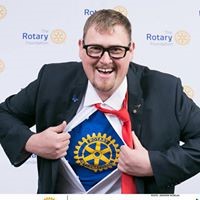
Please note the different day, which was changed to suit Evan.
If you have a friend who wants to attend please let me know and I will ensure that they receive the email with the link to the meeting.
Women share stories of humanitarian service on International Women’s Day
What motivates everyday women to do extraordinary things — to positively change the lives of people halfway around the world while inspiring so many folks at home?

Three Rotary members answered that question at a celebration of International Women’s Day hosted by the World Bank at its Washington, D.C., headquarters 8 March.
Speaking to an audience of more than 300, with thousands listening to the live-stream, Razia Jan, Deborah Walters, and Ann Lee Hussey told their personal stories and explained what inspired them to build a girls school in Afghanistan, assist people living in a Guatemala City garbage dump, and lead more than 24 teams to immunize children in Africa and Asia.
“I’m so inspired to see the faces of the children, what they’re learning, how to stand up for their rights, to have ambition … to want to do things that may even be impossible — to have dreams,” said Jan, a member of the Rotary Club of Duxbury, Massachusetts, USA.
An Afghan native now living in the United States, Jan has worked for decades to build connections between Afghans and Americans while improving the lives of young women and girls in Afghanistan.
Founder and director of the Zabuli Education Center, a school that serves more than 625 girls in Deh’Subz, Afghanistan, Jan said the first class of students graduated in 2015 and a women’s college will open soon.
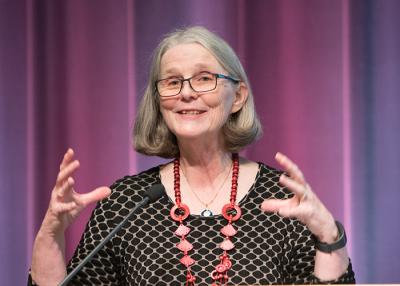
The girls school teaches math, English, science, and technology, along with practical skills to prepare them to achieve economic freedom within a challenging social environment.
Walters, a neuroscientist and member of the Rotary Club of Unity, Maine, USA, has served as a volunteer for Safe Passage (Camino Seguro), a nonprofit organization that provides educational and social services to children and families who live in a Guatemala City garbage dump.
Walters, known as the “kayaking grandmother,” traveled from her home in Maine to Guatemala in a small kayak to raise awareness of the plight of the residents.
Hussey, a member of the Rotary Club of Portland Sunrise, Maine, has made the eradication of polio and the alleviation of suffering by polio survivors her life’s work.
A polio survivor herself, she’s spent the past 14 years leading teams of Rotary volunteers to developing countries to immunize children during National Immunization Days.

She often chooses to lead or participate in NIDs in places that don’t often see Westerners: Bangladesh, Chad, Mali, Niger, Nigeria, and remote areas of Egypt and India. There, the need is greatest, and the publicity and goodwill that the trips foster are critical in communicating the urgency of the need for immunizations.
“These women exemplify what the World Bank is striving to attain every day with the twin goals of ending extreme poverty within a generation and boosting shared prosperity,” said Daniel Sellen, chair of the World Bank Group Staff Association. “They illustrate the power of women to change the world and improve people’s lives through innovative and impactful projects in education, economic development, and health.”
